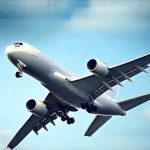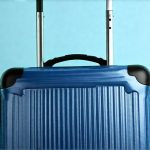Traveling long distances by air is often an incredible experience, opening up opportunities for adventure, business, and connection. However, even the most seasoned traveler can encounter discomforts during extended flights, and one surprisingly common issue is managing urination. The combination of limited movement, cabin pressure changes, and potential anxiety can all contribute to increased frequency or urgency. Understanding why these changes occur and proactively preparing for them can significantly improve your flight experience, turning a potentially stressful situation into a minor inconvenience. It’s not just about avoiding embarrassment; it’s about maintaining comfort and enjoying the journey.
This article isn’t about diagnosing medical conditions – that requires professional evaluation – but rather providing practical tips and strategies to help you navigate the physiological challenges of long flights regarding urination. We will explore how to best prepare before your flight, what steps to take during the flight itself, and even address some common anxieties surrounding bathroom access on airplanes. The goal is to empower you with knowledge and tools so that you can confidently tackle those longer journeys without undue worry or discomfort related to needing to use the restroom. Ultimately, a little preparation goes a long way toward a more pleasant travel experience.
Pre-Flight Preparation: Setting Yourself Up for Success
A significant portion of managing urination during flight actually starts before you even step foot on the plane. Proactive planning can minimize issues and give you peace of mind. It’s about anticipating potential problems and taking steps to mitigate them, rather than reacting when discomfort arises mid-flight. This isn’t just about avoiding excessive fluid intake (though that is part of it); it’s a holistic approach encompassing your diet, hydration strategy, and even pre-flight bathroom habits.
Consider what you eat and drink in the 24 hours leading up to your flight. – Avoid excessive caffeine and alcohol, as these are diuretics – meaning they increase urine production. While that morning coffee might seem essential, it could lead to more frequent bathroom trips during the flight. Similarly, be mindful of salty foods which can also contribute to fluid retention and subsequent urination. Instead, focus on hydrating with water throughout the day before your flight. Proper hydration is key, but timing is important; don’t chug a large amount of water immediately before boarding. A well-hydrated body functions better overall, including regulating bladder control.
Finally, ensure you empty your bladder completely before going through security and again right before boarding. This simple step can buy you valuable time during the initial stages of the flight when bathroom access might be limited due to take-off and turbulence. It’s a small detail that can make a big difference in how comfortable you feel during those first crucial hours. Think about packing travel-sized hygiene products, even if you don’t typically use them, for freshening up after using the airplane restroom.
During Flight Strategies: Managing Urgency and Comfort
Once you’re airborne, your focus shifts to managing any urges that arise and minimizing discomfort. Airplane bathrooms are notoriously small and can be challenging to navigate, especially during turbulence. Understanding how cabin pressure affects your body is also crucial. Cabin air is drier than most environments, which can contribute to dehydration and potentially irritate the bladder.
Hydration remains paramount even during the flight. Continue sipping water regularly, but moderate your intake, particularly in the hours leading up to landing. Consider bringing a reusable water bottle that you can refill after going through security; this helps reduce waste and ensures you have access to fluids throughout the journey. Avoid sugary drinks, as they can exacerbate bladder irritation. A good rule of thumb is to match your fluid intake with the flight duration – longer flights necessitate careful fluid management.
If you feel a strong urge to urinate but aren’t near a restroom or turbulence prevents movement, practice pelvic floor exercises (Kegels). These exercises strengthen the muscles that support your bladder and can help temporarily control urgency. It’s important to remember that airplane restrooms are often equipped with loud flushing mechanisms; earplugs or noise-canceling headphones can significantly reduce anxiety associated with using them. Don’t hesitate to ask a flight attendant if you need assistance – they are there to help, and many passengers experience similar concerns.
Dealing with Anxiety & Limited Access
A significant component of the discomfort related to urination on flights isn’t necessarily physical; it’s often psychological. Many people worry about needing to “go” when access to restrooms is limited or during periods of turbulence. This anxiety can actually increase urgency and exacerbate the problem, creating a vicious cycle. Recognizing this link between anxiety and bladder control is the first step toward managing it.
Deep breathing exercises and mindfulness techniques can be incredibly helpful in calming pre-flight and mid-flight anxieties. Simple practices like focusing on your breath or visualizing a peaceful scene can reduce stress levels and lessen the feeling of urgency. If you are prone to anxiety, consider discussing potential strategies with your doctor before traveling. Remember that flight attendants are accustomed to dealing with passenger concerns; don’t feel embarrassed to politely inquire about restroom availability or ask for reassurance during turbulence.
Turbulence is a common concern, but most airplanes are designed to withstand significant turbulence without issue. Flight attendants will usually signal when it’s safe to move around the cabin. If you absolutely need to use the restroom during turbulence, inform a flight attendant; they can advise you on the safest course of action and potentially assist you. Prioritize safety above all else.
Navigating Airplane Restrooms: Practical Tips
Airplane restrooms are… compact. They lack the spaciousness and comfort of home bathrooms, which can add to the anxiety surrounding their use. Understanding the layout and potential challenges can help you navigate them more effectively. Often, they have limited space for personal belongings and can be quite noisy due to the flushing mechanisms and airplane sounds.
Bring disposable wipes or hand sanitizers, as hygiene standards in airplane restrooms can vary. Be prepared for a potentially cramped environment – avoid bringing large bags into the restroom with you. If you struggle with mobility issues, inform a flight attendant beforehand; they may be able to offer assistance or identify a more accessible restroom if available. Consider using the restroom during less busy times – such as when meal service is concluded or while many passengers are sleeping – to avoid queues and potential delays.
Clothing Choices & Comfort Considerations
Finally, your choice of clothing can significantly impact your comfort level regarding urination during flight. Tight-fitting clothes can constrict movement and potentially exacerbate bladder pressure, while loose-fitting garments allow for greater freedom and comfort. Avoid restrictive waistbands or materials that don’t breathe well.
Choose underwear made from breathable fabrics like cotton. Layering is also a good idea, as cabin temperatures can fluctuate. Consider wearing comfortable shoes that are easy to slip on and off, as airplane bathrooms often require you to remove your shoes. Prioritize comfort above style when packing for a long flight – your bladder will thank you! Ultimately, being prepared physically and mentally is the best way to ensure a smooth and enjoyable travel experience.





















